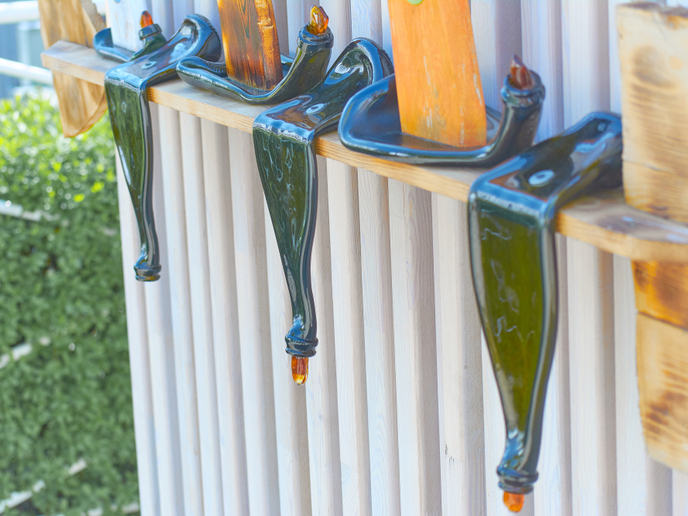Is glass really a slow-moving liquid?
“I had a discussion recently with a glass scientist. He was adamant this idea is completely wrong,” says Schibille, an art historian and an archaeologist at the National Centre for Scientific Research (CNRS) in France. Unlike metal or pottery, the individual molecules in glass do not have a regular structure. Instead, they look more like those seen in liquids. “Glass is a fascinating material, we are able to visualise the structure using transmission electron microscopy,” adds Schibille. “Here you can see it’s not a regular crystal, but a mess, and that’s why people think it flows.” This belief is supported by investigations into the windowpanes of medieval churches, which can be thicker at the bottom than the top. But this is a consequence of the production process, says Schibille. “In addition, medieval window glass tends to be badly preserved. Part of the reason people believe glass is unstable, is that this glass can become corroded and deteriorated by environmental pollutants.” However, that doesn’t mean that glass doesn’t change over time. Through the EU-funded GlassRoutes project, Schibille found that shifts in technology and geopolitics across medieval Europe are recorded in ancient glass. In the Roman period, glassmaking was centralised in Egypt and the Levant, where manufacturers added mineral soda to the mixture. “Sand is the main constituent of glass, but silica has a high melting temperature of around 1700 °C,” explains Schibille. “Ancient furnaces couldn’t reach that, and needed something to bring down the melting temperature.” Around the turn of the 9th century, glass appears that uses plant ash in place of mineral soda as an additive. “Plant ash as an additive is quite dirty, it introduces all sorts of impurities like magnesium, iron and aluminium,” says Schibille. Around the same time, the centralised production of the Roman era gives way to more localised glassmaking, the reasons for which are not clear. “There is also a bit of a shift in the type of object you find,” adds Schibille. “In the Roman and Visigoth period, you have glass tableware, and this changes during the Islamic conquest to smaller objects, drinking glasses, bottles, et cetera.” By the late Roman period, glass is no longer a luxury commodity, and its use becomes very utilitarian, used in all kinds of objects, from small inkwells to giant mosaics. More than a millennium later, we have yet to see any of these items slowly collapse into a puddle of glass. Click here to find out more about Nadine Schibille’s research: Study of ancient glass provides a window into the past



